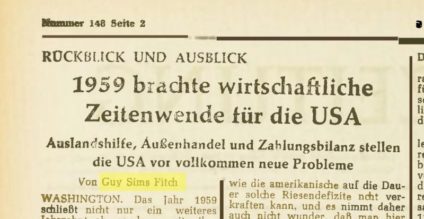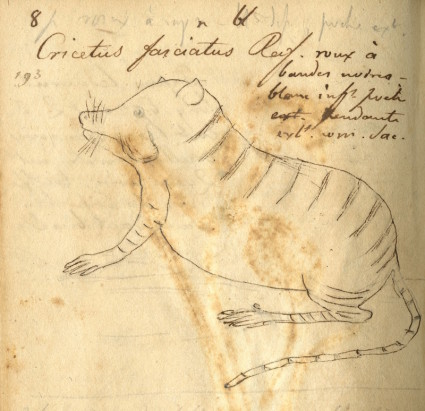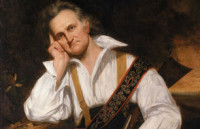The ferocious and funny Anna Merlan takes an impressively deep dive into the made-up career of Rachel Brewson, the JT LeRoy of womens-interest clickbait.
“The Team of Men Behind Rachel Brewston, the Fake Woman Whose Trump-Fueled Breakup Went Viral”
by Anna Merlan
Jezebel
October 4, 2016
 In December 2015, readers at women”™s site xoJane were enthralled and filled with all-caps rage by Rachel Brewson, a self-described “giant liberal” who boldly declared her love for a Republican named Todd. She described, in rapturous terms, how the couple”™s political disagreements fueled an ecstatic third-date bipartisan fuck-fest that soon flowered into a real relationship.
In December 2015, readers at women”™s site xoJane were enthralled and filled with all-caps rage by Rachel Brewson, a self-described “giant liberal” who boldly declared her love for a Republican named Todd. She described, in rapturous terms, how the couple”™s political disagreements fueled an ecstatic third-date bipartisan fuck-fest that soon flowered into a real relationship.
Mid-date, they got into a “heated debate” about politics, Brewson wrote. They fought from wherever the date took place (she didn”™t say), into the street, and into a cab. The discussion ended when Todd””who, as it turned out, was a gun-loving, Iraq-war-supporting libertarian””manfully invited himself up to her apartment.
“What followed was the best sex of my life up to that point,” Brewson wrote, whose author bio said she was a “dating editor” at a site called Review Weekly. “Somehow the political tension between us had transformed into sexual tension. I was hooked.”
The post was a modest success””it was shared just under 3,000 times on social media, and racked up 1,000 comments on xoJane itself (whose editor-in-chief is Jane Pratt of Sassy fame. The site was purchased by Time. Inc last fall). Many of those comments complained about Rachel”™s privileged white-woman version of liberalism, which allowed her to ignore “petty differences”””her term””between her and Todd on issues like immigration.
“He flashed some money your way and you”™re ready to label things like rape culture and systematic racism as “˜petty differences,”™” one commenter fumed. “You aren”™t as liberal as you want to believe you are.”
Three months later, the fairytale was over. Continue reading “An Internet Writer Breaks Up With Her Boyfriend Over Trump… You Won’t Believe What Happens Next!”

 You might be forgiven for not knowing her work — after all, she has a common name, one that she shares with other similarly successful authors on Amazon. Until this week, she had dozens of health, dieting, cooking, and weight loss ebooks to her name. She published over a dozen ebooks on Amazon this year — five ebooks alone this month. And Moore would even work with other authors — like Nina Kelly, Andrew Walker, and Julia Jackson — who have all published about a dozen ebooks each this year as well.
You might be forgiven for not knowing her work — after all, she has a common name, one that she shares with other similarly successful authors on Amazon. Until this week, she had dozens of health, dieting, cooking, and weight loss ebooks to her name. She published over a dozen ebooks on Amazon this year — five ebooks alone this month. And Moore would even work with other authors — like Nina Kelly, Andrew Walker, and Julia Jackson — who have all published about a dozen ebooks each this year as well. Guy Sims Fitch had a lot to say about the world economy in the 1950s and 60s. He wrote articles in newspapers around the globe as an authoritative voice on economic issues during the Cold War. Fitch was a big believer in private American investment and advocated for it as a liberating force internationally. But no matter what you thought of Guy Sims Fitch”™s ideas, he had one big problem. He didn”™t exist.
Guy Sims Fitch had a lot to say about the world economy in the 1950s and 60s. He wrote articles in newspapers around the globe as an authoritative voice on economic issues during the Cold War. Fitch was a big believer in private American investment and advocated for it as a liberating force internationally. But no matter what you thought of Guy Sims Fitch”™s ideas, he had one big problem. He didn”™t exist. To the general public, the name JT LeRoy probably rings only the vaguest of bells, if any at all. It didn’t for this particular critic. But that innocent ignorance is all the more reason to seek out the documentary “
To the general public, the name JT LeRoy probably rings only the vaguest of bells, if any at all. It didn’t for this particular critic. But that innocent ignorance is all the more reason to seek out the documentary “ Pranks are meant to be discovered””what”™s the point in fooling someone if they never notice they”™ve been fooled? But one 19th century prank, sprung by John James Audubon on another naturalist, was so extensive and so well executed that its full scope is only now coming to light.
Pranks are meant to be discovered””what”™s the point in fooling someone if they never notice they”™ve been fooled? But one 19th century prank, sprung by John James Audubon on another naturalist, was so extensive and so well executed that its full scope is only now coming to light. During their visit, though, Audubon fed Rafinesque descriptions of American creatures, including 11 species of fish that never really existed. Rafinesque duly jotted them down in his notebook and later proffered those descriptions as evidence of new species. For 50 or so years, those 11 fish remained in the scientific record as real species, despite their very unusual features, including bulletproof (!) scales.
During their visit, though, Audubon fed Rafinesque descriptions of American creatures, including 11 species of fish that never really existed. Rafinesque duly jotted them down in his notebook and later proffered those descriptions as evidence of new species. For 50 or so years, those 11 fish remained in the scientific record as real species, despite their very unusual features, including bulletproof (!) scales.